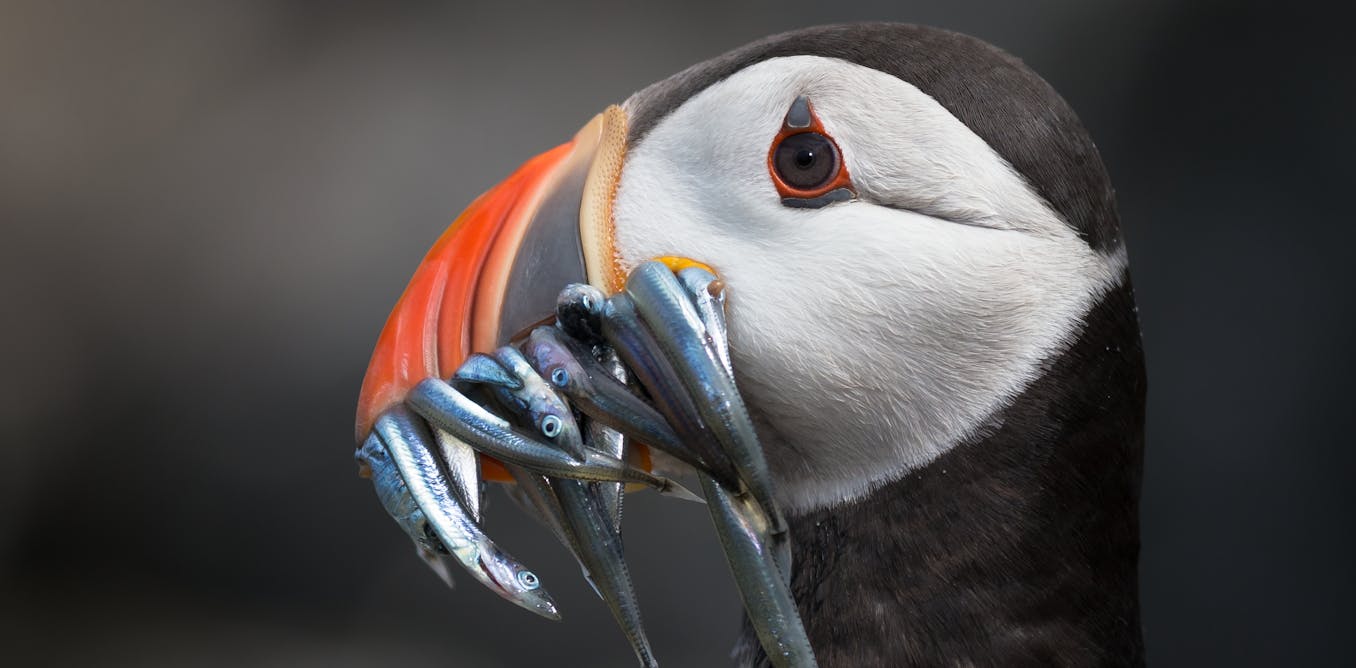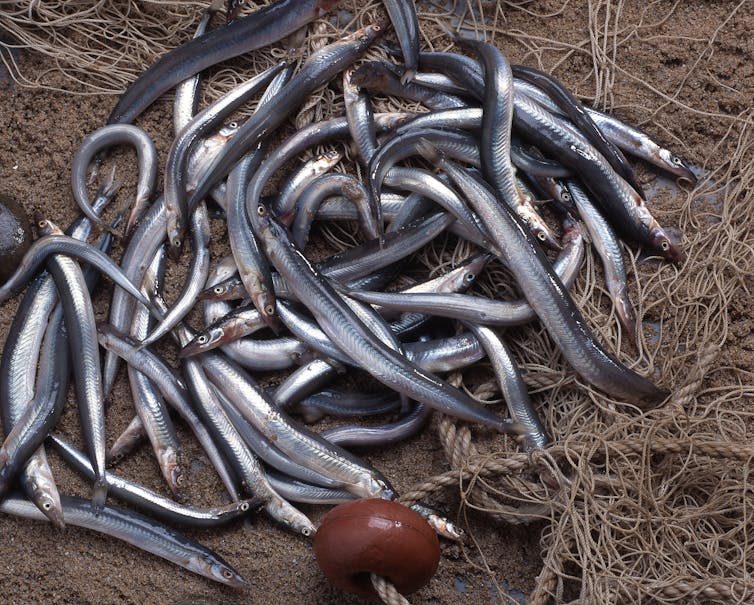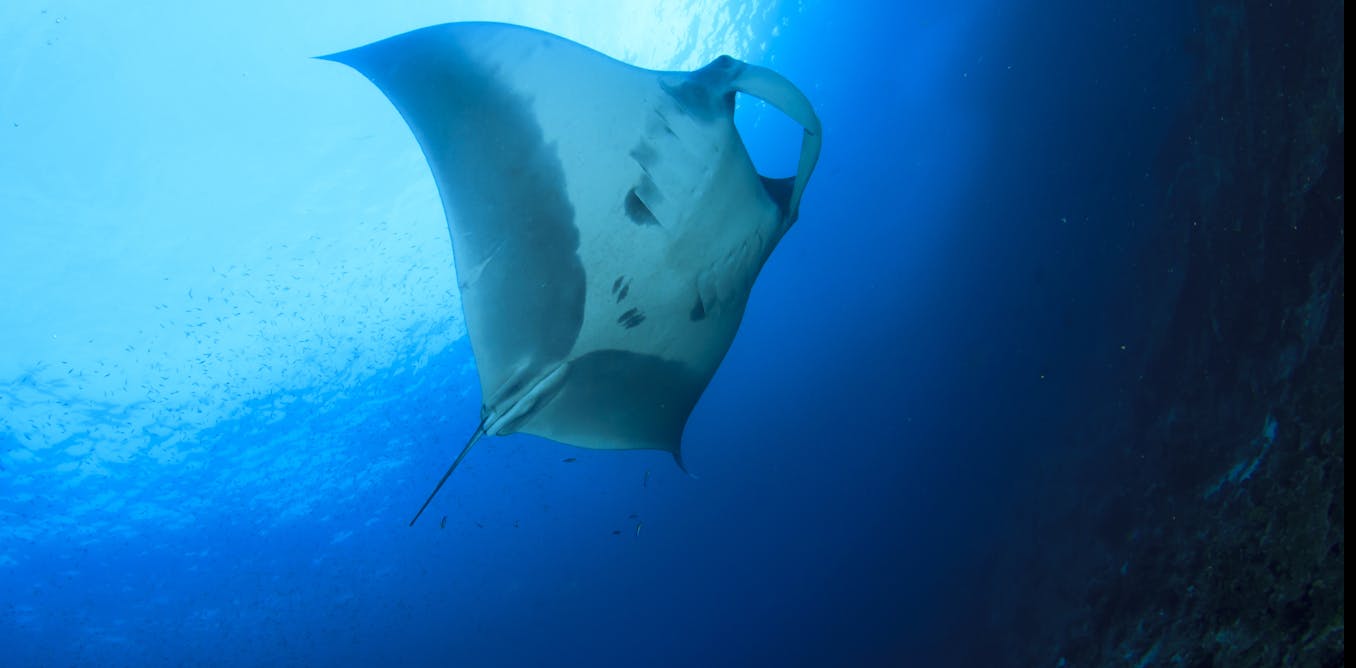
Struggling seabirds thrown a lifeline by new commercial fishing ban in the North Sea – but it may not be enough
Many seabird colonies around UK coastlines struggle to breed because the sandeels they feed on have been overfished. The upcoming closure of sandeel fisheries will be good news for marine wildlife.
Feb. 13, 2024 • 8 min • Source
With their bright, orange feet and colourful beaks full of glistening fish, puffins are really charismatic seabirds. But puffin populations are in decline , largely due to their struggle to catch enough of these shiny fish: sandeels .
Sandeels have been industrially fished on an industrial scale since the 1950s , not for human consumption but to make fishmeal. They are the bedrock of marine ecosystems in the North Sea . But a new fishing ban could provide welcome respite for puffins and other marine wildlife.
The UK and Scottish governments have announced a permanent end to industrial sandeel fishing in English and Scottish waters. This ban will begin on April 1 – the start of this year’s sandeel fishing season.
The news of the closure of this sandeel fishery has been met with praise from across the conservation sector. A quarter of a century of campaigning by the RSPB seems to have paid off.
The health of sandeel populations in Scottish and English seas can link to the breeding success of the seabirds that feed on them, but the correlation is complex. This fishing ban is a start but, with the added pressures of climate change, more is needed to save Britain’s seabirds.
The significance of sandeels
These small, silver, schooling fish pack a large nutritional punch. They feed on zooplankton and are a vital source of food for larger fish such as cod, haddock and whiting, as well as top predators such as seals .
Sandeels are also a favourite food for seabirds such as surface-feeding gulls and terns, and deep-diving auk species including puffins, razorbills and guillemots.
As well as falling foul of marine predators, sandeels are caught by humans, largely to be used as feed for farmed fish , such as salmon, or livestock. The sandeel fishing grounds around the UK are jointly managed by the UK and the European Union.
But the UK government has not allowed British vessels to fish for sandeels since 2021 . Instead, commercial fishing for sandeels has most recently been carried out by European vessels, particularly those from Denmark that regularly fish in UK waters during the summer.
Data from the Marine Management Organisation suggests that an average of 257,000 tonnes of sandeels were caught annually by EU vessels between 2015 and 2019.
One of the major sandeel fishing areas in the North Sea, a 21,000km2 area off the east coast of Scotland and northeast England called sandeel area 4 , has been closed to both UK and EU vessels since 2000 – although a small scientific fishery continued to conduct stock assessments during this time .
Following the area’s closure, sandeel numbers grew and that corresponded with an initial increase in the number of fledged chicks in black-legged kittiwakes , an iconic gull species that has declined in recent decades.
Elsewhere in the world, closures of other “forage fish” fisheries (those that catch species that are prey for larger predators) have revealed positive impacts. African penguins rear more chicks in years when anchovy and sardine fishery areas off the coastline of South Africa are closed .

As well as removing sandeels from the sea, industrial fishing can disturb them and drive them to different locations or to deeper depths, away from the hungry beaks of kittiwakes that catch prey for themselves and their chicks at the sea’s surface.
Relationships between the closure of sandeel area 4 and the breeding success of other sandeel-reliant seabirds around northern England and Scotland have not been obvious. This is potentially due to differences in foraging ranges and diving abilities between different seabirds .
For kittiwakes, breeding success initially rose after the closures until 2018, but did not bounce right back to the levels observed before fishing here began , despite 20 years of potential recovery time. This suggests that other factors influence breeding success in kittiwake colonies.
Climate drivers
Studies of the impacts that forage fishery closures have on seabirds consistently flag the importance of environmental influences. Although fisheries could exacerbate declines in some seabird species , changing environmental conditions have larger impacts.
Sandeels bury themselves in the sand during the winter and come out during the day to feed in the summer, but warmer temperatures can cause them to emerge from the sand earlier in the year . This change might have detrimental knock-on effects on the seabirds that feed sandeels to their chicks during their summer breeding seasons.
Climate change, which has already given rise to a warmer North Sea , is a main driver of sandeel declines . This has important ramifications for birds and other animals higher up the food chain.
The fourth national seabird census (2015–2021) revealed that more than half the seabird species breeding around Britain and Ireland’s coastlines have declined over the past 20 years. Many of these declines have been linked to the influence of climate change on the availability of their prey.
The government’s environmental watchdog, the Office for Environmental Protection, recently warned that the government’s progress on its promise to stem declines in British nature by 2030 has been scant . The halting of sandeel fishing around Scotland and northern England is not enough to conserve the seabirds that breed around our coastlines. A more ambitious plan is called for.
Achieving the sandeel fisheries closure involved an immense lobbying effort that has been backed up by scientific evidence . This success has demonstrated the importance that the British public places on protecting nature. Now, the government ought to not only combine fisheries closures with effective monitoring, but to diverge from burning fossil fuels that continue to heat our planet and choke conservation efforts.
Ultimately, to ensure that healthy sandeel populations will support seabirds in the future, we need to maintain cool seas that will allow their stocks to bounce back to pre-fishing levels.

Don’t have time to read about climate change as much as you’d like?
Get a weekly roundup in your inbox instead.
Every Wednesday, The Conversation’s environment editor writes Imagine, a short email that goes a little deeper into just one climate issue.
Join the 30,000+ readers who’ve subscribed so far.
Ruth Dunn has previously received funding from the Natural Environment Research Council (NERC).


